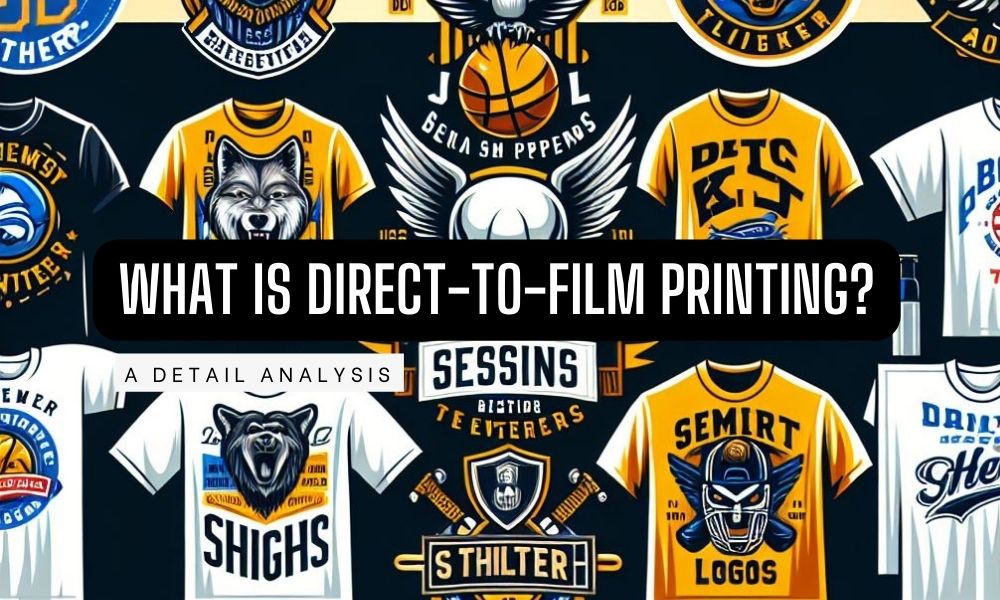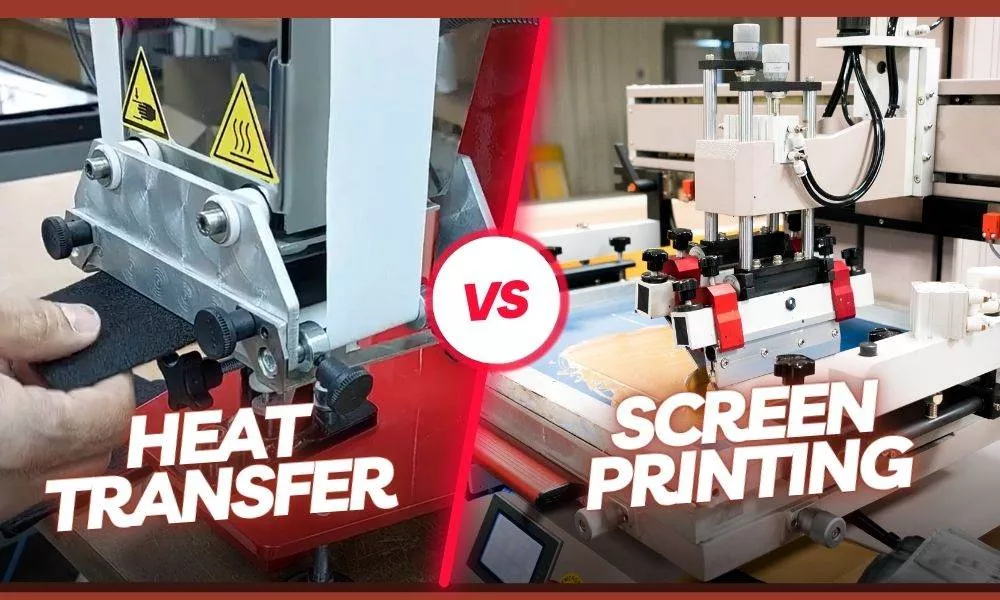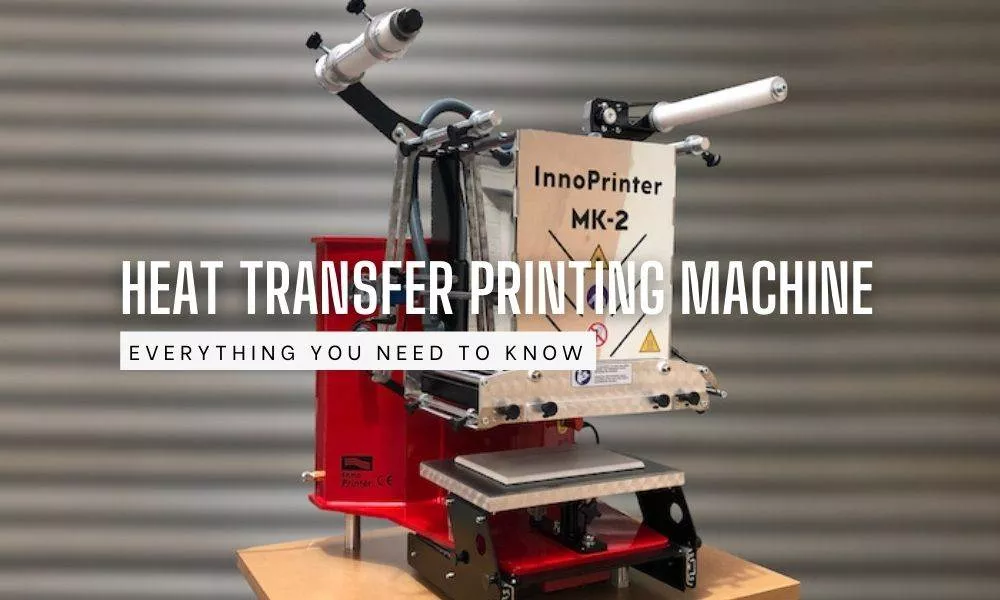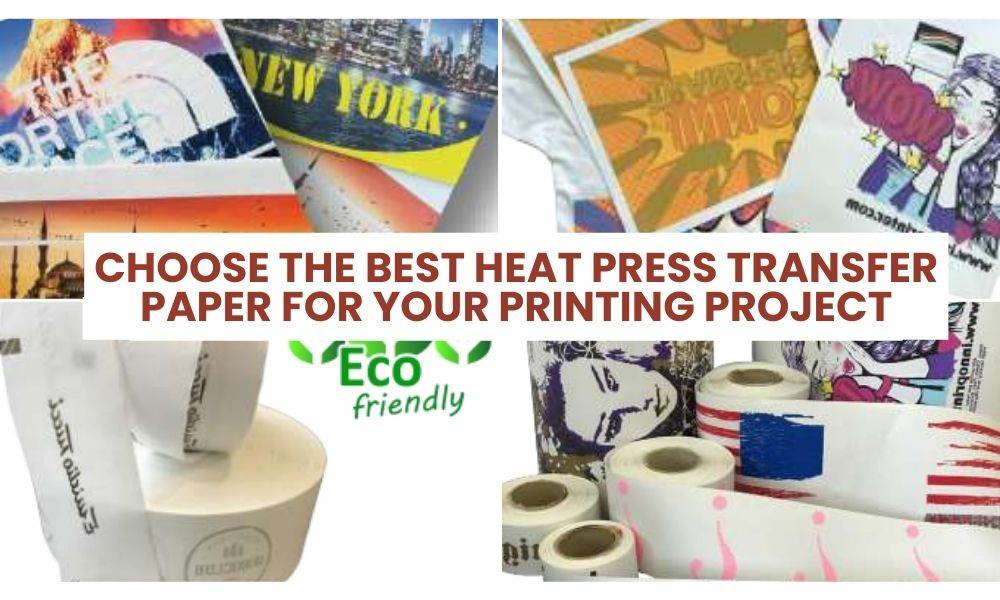Direct-to-film printing is a revolutionary technology that has transformed the screen printing industry. Unlike traditional methods that involve creating stencils on separate films or transferring images onto screens, direct-to-film printing allows for the direct printing of images onto film substrates.
What is Direct-To-Film Printing?
DTF Printing is a method utilizing inkjet technology to personalize T-shirts and various fabric items by incorporating vibrant, intricate designs and textual elements. Basically, the more complex the design, the more suited it is to a DTF transfer. This streamlined process offers numerous benefits, including cost-effectiveness, faster turnaround times, and high-quality output.
Advantages of Direct-to-film Printing
One of the primary advantages of direct-to-film printing is its cost-effectiveness compared to traditional methods. By eliminating the need for separate films and transfer processes, businesses can save both time and money. Additionally, direct-to-film printing offers faster turnaround times, allowing for increased productivity and efficiency.
Its appeal is understandable. With its minimal entry requirements, it serves as an excellent choice for fabric customization, regardless of one’s level of experience.
Moreover, direct-to-film printing delivers high-quality output and resolution, ensuring crisp and detailed images on various substrates. Whether printing on textiles, signage, or packaging materials, this technology offers unparalleled clarity and precision.
The transfer maintains a consistently excellent quality. It possesses a thinness that preserves the natural texture of the material while also being flexible enough to endure stress and movement. Furthermore, it exhibits strong performance during washing, retaining its color for several washes without fading, depending on the type of material utilized.
Design Preparation in Direct-to-film Printing
Direct-to-film printing operates on a simple yet sophisticated process. First, the desired image is digitally designed or imported into the printing software. You don’t necessarily need advanced graphic design skills to provide DTF transfer products. Many times, customers supply their own artwork, such as company logos, band merchandise, or custom designs. If needed, you can always subcontract design tasks. However, utilizing design software like Adobe Illustrator, Photoshop, or CorelDRAW can greatly aid in preparing design files. The choice of software is subjective, so it’s important to select one that suits your comfort level.
Make sure you export the file in PNG format because in PNG you will get a transparent background which will help to reflect your design properly in the fabric.
In DTF transfer design, the significance of white ink cannot be overstated. When working with dark-colored substrates, it becomes crucial to print a white layer at top the CMYK layer. This white layer serves as the foundational base once the transfer process is completed, ensuring that colors stand out vividly against the darker background. Even when transferring onto white substrates, it is still advisable to include a white layer, albeit at a reduced density of at least 50%. This ensures that colors maintain their vibrancy and clarity, enhancing the overall quality of the printed design. Thus, the inclusion of white ink plays a pivotal role in achieving optimal color reproduction and ensuring that designs appear crisp and vibrant, regardless of the substrate color.
How Direct-to-film Printing Works
Then, the image is directly printed onto the film substrate using specialized inkjet printers equipped with UV-curable inks. The UV-curable inks are instantly cured by UV light, resulting in a durable and vibrant image on the film. Once the printing is complete, the film can be used as a stencil for screen printing or other applications.
How to Print DTF Transfers: A Step-by-Step Guide
1. Prepare Your Design:
Start by creating or selecting the design you want to print using design software such as Adobe Illustrator, Photoshop, or CorelDRAW. Ensure that your design is properly sized and positioned for printing. Ensure a white layer in design when printing on dark fabric.
2. Export the File:
Once your design is ready, export the file in a compatible format for printing. Common file formats for DTF printing include PNG, JPEG, PDF, ESP or TIFF. Your design may need to be mirrored so that it appears correctly when transferred from the transfer film. Make sure to maintain the highest quality and resolution possible for optimal printing results.
3. Print Your Design:
Load the printed film into your DTF printer, ensuring it is properly aligned. Adjust the printer settings according to the specifications of your printer and the characteristics of the transfer film being used. Start the printing process and monitor the output to ensure accurate color reproduction.
4. Prepare the Transfer:
After printing is complete, carefully remove the printed film from the printer. Apply the adhesive powder onto the film, ensuring it covers the entire printed area evenly. Remove any excess powder from the film by gently tapping it. Trim any excess film around the edges of the design to ensure clean and precise transfer onto the fabric.
5. Prepare the Fabric:
Make sure the fabric is clean without any hairy fibers or any creases. Try to remove any wrinkles and moisture, ensuring a smooth surface for transfer.
6. Position the Design on the Fabric:
Place the fabric onto the heat press carefully, to increase the precision we have innovated a laser system on our Innoprinter Heat presses which will ensure your design is always the right place of your fabric. Ensure that the film is aligned correctly and that there are no wrinkles or bubbles between the film and the fabric.
7. Press Your Design:
Once the design is properly positioned, cover it with a protective sheet or parchment paper to prevent direct contact with the heat press. Before starting, preheat your heat press to the recommended temperature for DTF transfers, typically set at around 150 degrees Celsius. Press the design using the heat press machine according to the recommended time, temperature, and pressure settings for DTF transfers.
8. Peel and Finish:
Pelling is either a hot peel or a cold peel. After pressing is complete, carefully peel off the protective sheet and remove the printed film from the fabric. Allow the fabric to cool before handling it further. You can re-apply heat if any parts of the design lift when peeled. Your DTF transfer is now complete, and you can enjoy the vibrant and durable print on your fabric.
Follow these step-by-step instructions to successfully print DTF transfers and achieve professional-quality results every time.
Applications of Direct-to-film Printing
Direct-to-film printing has a wide range of applications across various industries. In the screen printing industry, it has revolutionized the way stencils are created, allowing for faster and more accurate results. DTF transfers offer versatility across a wide range of fabric types, accommodating materials like cotton, polyester, synthetic blends, treated leather, and even delicate silk. Additionally, direct-to-film printing is widely used in textile and apparel printing, as well as signage and graphics production.
DTF heat transfers find application in various industries and creative endeavors, including:
1. Apparel Printing: DTF transfers are widely used in the apparel industry for customizing T-shirts, hoodies, hats, and other garments with intricate designs, logos, and artwork.
2. Textile Decoration: They are employed for decorating textiles such as curtains, tablecloths, towels, and bedding with personalized designs and patterns.
3. Promotional Products: DTF transfers are utilized to create promotional items like tote bags, caps, and aprons featuring company logos, slogans, or branding messages.
4. Sportswear and Team Uniforms: Sports teams and athletic organizations use DTF transfers to customize uniforms, jerseys, and sports apparel with team names, player numbers, and sponsor logos.
5. Fashion Accessories: DTF transfers are applied to fashion accessories like bags, shoes, and hats to add unique designs, patterns, and embellishments.
6. Home Decor: They are used in home decor applications to personalize items like pillows, cushion covers, wall art, and decorative accents with custom designs and motifs.
7. Event Merchandise: DTF transfers are utilized for creating event merchandise such as souvenir shirts, bags, and accessories for concerts, festivals, trade shows, and other special occasions.
8. Corporate Gifts: Businesses use DTF transfers to create custom gifts and giveaways for clients, employees, and partners, including branded items like mugs, pens, and keychains.
9. DIY Projects: Hobbyists and DIY enthusiasts incorporate DTF transfers into their projects for creating unique crafts, gifts, and decor items with personalized designs.
10. Customized Products: DTF transfers enable the customization of a wide range of products, including phone cases, laptop sleeves, water bottles, and more, catering to individual preferences and tastes.
Challenges and Limitations of DTF Printing
While direct-to-film printing offers many advantages, it also presents certain challenges and limitations. For example, achieving consistent image quality can be challenging, especially when printing on textured or uneven substrates. Additionally, compatibility issues with certain materials may arise, and certain substrates like natural or synthetic leather may undergo texture loss when subjected to the heat press. To mitigate risks, conducting preliminary testing is advisable. Additionally, employing protective paper ensures the substrate remains unharmed by the platen during the transfer process. It always requires careful selection of ink and film substrates.
Future Trends in Direct-to-film Printing
Looking ahead, the future of direct-to-film printing looks promising. Advances in technology are expected to further enhance the capabilities and versatility of this printing method. Integration with digital workflows and automation processes will streamline production and increase efficiency. Moreover, ongoing efforts to improve environmental sustainability will drive innovation in eco-friendly inks and substrates. Additionally, another trend in customizable fashion is the rise of personalized accessories, such as custom-designed sneakers and handbags, which are gaining popularity among fashion enthusiasts seeking unique and one-of-a-kind items.
Conclusion
In conclusion, direct-to-film printing is a game-changer in the printing industry, offering cost-effective, high-quality solutions for a wide range of applications. With its streamlined process and numerous benefits, it has become a preferred choice for businesses seeking efficient and reliable printing solutions. Indeed, there are potential applications yet to be uncovered, indicating further opportunities for growth and expansion of DTF printing.
FAQs:
Q: How does direct-to-film printing compare to other printing methods in terms of image quality?
Direct-to-film printing typically offers excellent image quality, but results may vary depending on factors such as substrate texture and ink compatibility.
Q: What are some common challenges faced when implementing direct-to-film printing?
Challenges may include achieving consistent image quality, selecting the right ink and substrate combinations, and ensuring compatibility with existing workflows.
Q: Can direct-to-film printing be used for large-scale production?
Yes, direct-to-film printing can be scaled to accommodate large production volumes, making it suitable for both small & large-scale and industrial applications.
Q: Are there any environmental benefits to using direct-to-film printing?
Yes, direct-to-film printing can reduce waste and energy consumption compared to traditional printing methods, especially when using eco-friendly inks and substrates.




I think this is among the most important info for me.
And i am glad reading your article. But want to remark on few general things,
The site style is ideal, the articles is really nice : D.
Good job, cheers
Thanks so much, we are glad you found it helpful!
I do believe all of the ideas you have presented in your post.
They are very convincing and will definitely work.
Still, the posts are too short for novices.
May you please extend them a bit from next time? Thanks for the post.
Thank you for your feedback. Hopefully we will work on that
Generally I do not learn article on blogs, however I would
like to say that this write-up very forced me to try and do it!
Your writing taste has been amazed me. Thanks, very nice post.
Welcome